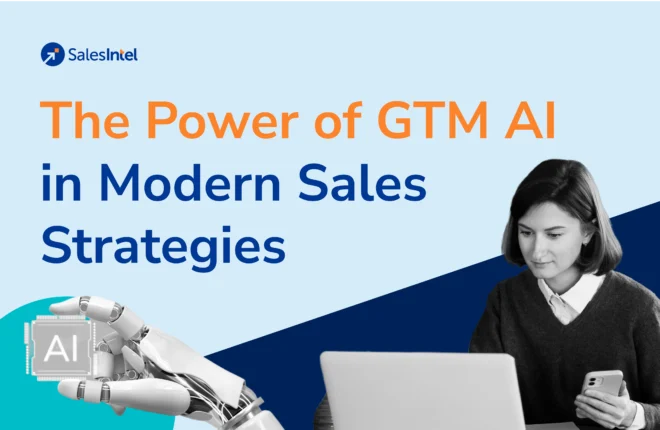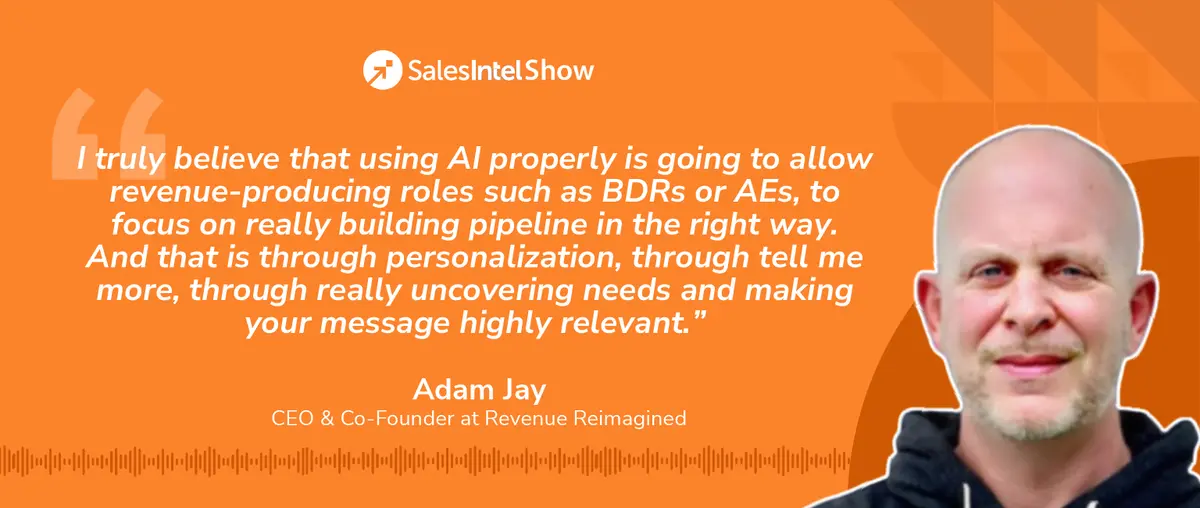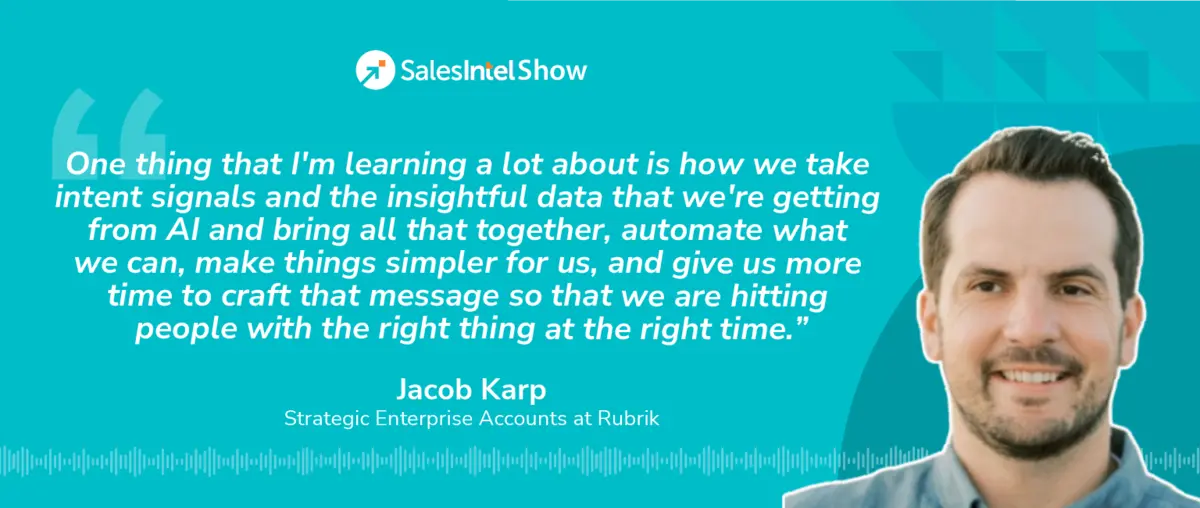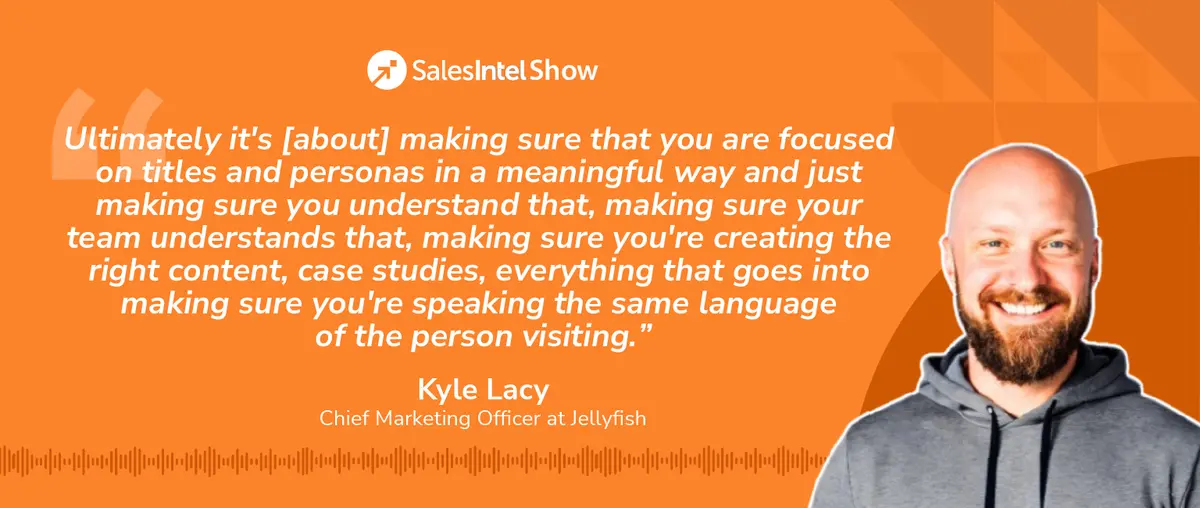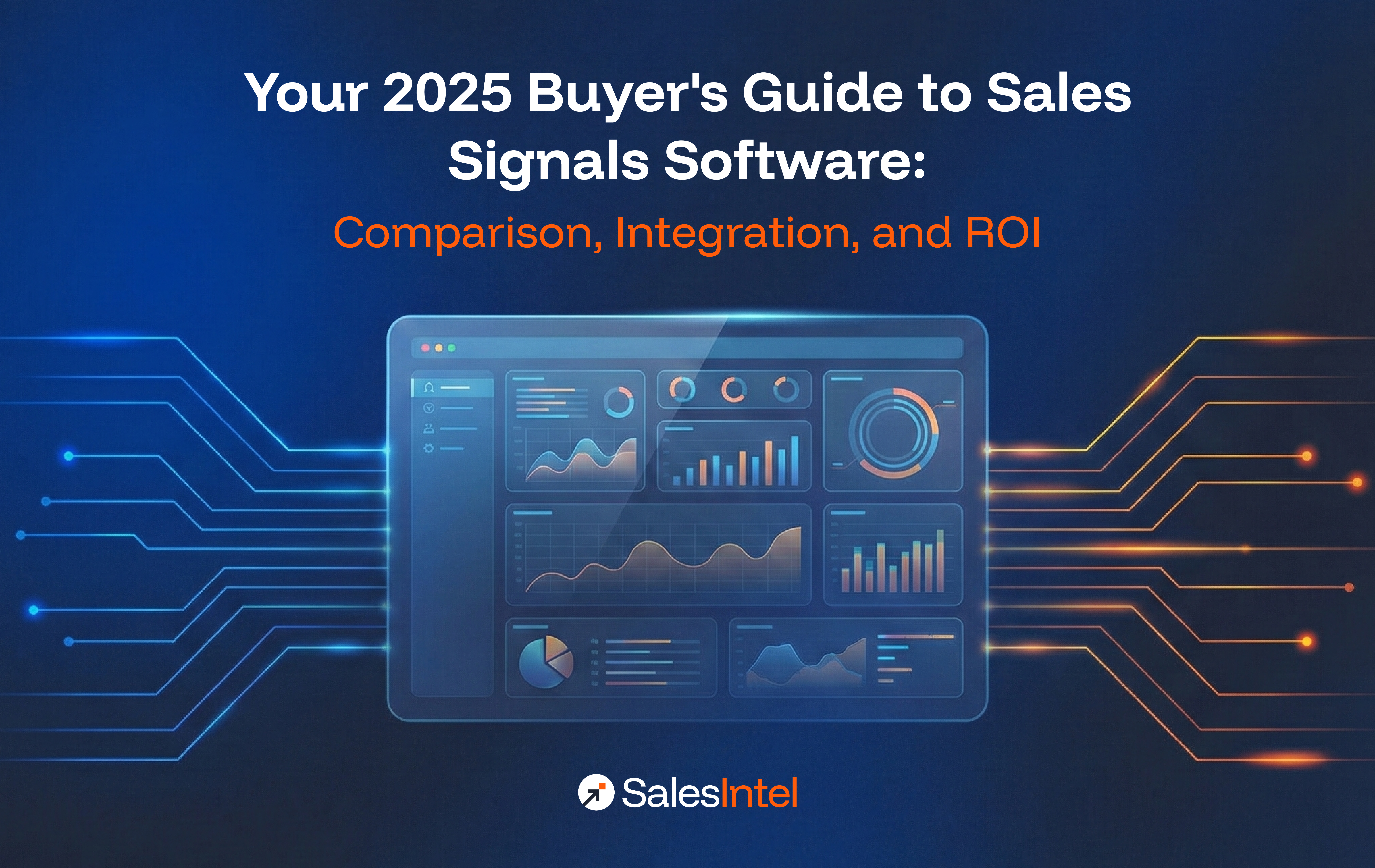From personalized content delivery to predictive analytics for sales forecasting, artificial intelligence (AI) tools are promising to reshape every aspect of the go-to-market (GTM) process, and many companies are increasingly turning to AI to gain a competitive edge, streamline their operations, and drive efficiency across their revenue-generating activities.
However, while AI is undoubtedly a game-changer, the most successful GTM strategies don’t rely on AI alone. Instead, forward-thinking companies are not using AI to replace human interaction but to enhance it. These companies are finding a balance between leveraging AI to free up their teams from mundane or repetitive tasks while preserving the irreplaceable human elements that foster meaningful connections and create conversion opportunities.
In our B2B Pipeline Pioneers podcast, forward-thinking revenue leaders share their insights into the current state of B2B and where it’s headed next. This article explores insights from those industry leaders on how to effectively incorporate AI into your (GTM) processes while preserving the human element that drives meaningful customer relationships.
GTM AI Opportunities
With so many promises and possibilities of AI, it can be hard to know what’s really worthwhile and what’s not. Here are a few key areas in which top revenue leaders are leveraging AI to enhance their GTM activities.
Personalization at Scale
Personalization has long been a holy grail in marketing and sales, but achieving it at scale has been a significant challenge. Research from Adobe found that overall, B2B buyers expect more personalization than their B2C counterparts, with 66% of B2B buyers expecting fully or mostly personalized content when buying a product or service.
With the advent of AI, businesses can now deliver highly tailored experiences to stand out in a sea of competitors fighting for room on a B2B buyer’s vendor shortlist.
In Episode 11 of B2B Pipeline Pioneers, Adam Jay, CEO & Co-Founder at Revenue Reimagined explored his vision for how AI can assist in crafting personalized outreach messages and building pipeline.
“I truly believe that using AI properly is going to allow revenue-producing roles such as BDRs or AEs, to focus on really building pipeline in the right way. And that is through personalization, through tell me more, through really uncovering needs and making your message highly relevant.” – Adam Jay
Leo Polonsky, Inside Sales Representative at Clari shared another viewpoint on AI’s role in large-scale personalization initiatives in Episode 18 of the podcast. Leo sees AI as fulfilling a critical need for content and messaging optimization that helps sales reps understand what specific content is most likely to resonate with prospects.
“There’s a startup called First Touch and they’re leveraging AI to understand and take data on a prospect, then it trains that model to understand whether or not they’ll actually reach out to this type of copy that it’s about to generate and then can generate many, many, many different variations of copy against the prospect.” – Leo Polonsky
It’s clear that AI is already helping to meet the demands of modern B2B buyers and can be incredibly effective for creating large amounts of highly personalized sales and marketing messaging and content, and we’re only just scratching the surface of what’s possible.
AI for Prospect Research and Outreach
One of the most significant advantages of incorporating AI into GTM strategies is its ability to automate repetitive, time-consuming tasks associated with effective sales and marketing outreach.
In Episode 27 of the podcast, Jacob Karp Strategic Enterprise Accounts at Rubrik discusses how AI-driven automation can bring together vast and varied data sources and enable sales and marketing professionals to focus on higher-value activities that require more creativity, empathy, and strategic thinking.
“One thing that I’m learning a lot about is how we take intent signals and the insightful data that we’re getting from AI and bring all that together, automate what we can, make things simpler for us, and give us more time to craft that message so that we are hitting people with the right thing at the right time.” – Jacob Karp
Similarly, Adam Jay envisions AI systems that can analyze every aspect of a company’s market, origins, operations, customers, and more to help create targeted lists on which to build highly personalized campaigns that address your target persona’s specific pain points.
“What AI is going to be able to do is take all of the information that we typically spend time building these lists of who we’re going to go after, and based on who we sell to, what we sell, how long the deal cycle is, what our value proposition is, what our origin story is, AI is going to be able to help us use tools like SalesIntel to get the right list.” – Adam Jay
According to Adam, this will enable revenue professionals to minimize the tedious and repetitive work of list building and get back to what they enjoy – talking to customers and building relationships.
“So we’re going to start with the right list and revenue professionals are going to get back to doing the things that they love to do, which is talk to clients, reach out to clients with highly curated, albeit slightly automated messages, and not spend all that time building lists of the wrong people.” – Adam Jay
In contrast to building large prospect lists, in Episode 26, Frannie Danzinger, VP of Sales, Strategic Accounts at Integrate shared her insight on how her team is leveraging AI for more qualitative prospect research.
“This year we’re (cautiously) deploying and testing an AI SDR tool that I’m very optimistic about. [The tool] is able to dig around online to gather the information that’s relevant to the company, track economic changes, acquisitions, mergers, investments, personnel changes – things like that and respond appropriately.” – Frannie Danzinger
By strategically implementing AI automation for repetitive and tedious tasks, you can tap into its strengths and create more efficient GTM processes that allow your human talent to focus on what they do best: building relationships, solving complex problems, and driving strategic growth.
The Limits of AI in Sales Communication
With the wealth of opportunity AI brings, it’s easy to see an idealized picture of AI ushering us into a period of unprecedented growth and optimization. However, these systems are not without their potential risks.
Everything Revolves Around Good Data
However, one important thing to keep in mind is, these systems and platforms are only as good as the data you feed them.
AI programs may be able to write beautifully tailored outreach emails that pull in data like a prospect’s job title to create messaging that perfectly addresses their specific pain points. However, if that job title is incorrect, all that personalization is wasted if you send an email tailored to a CRO to a VP of Engineering.
Kyle Lacy, Chief Marketing Officer at Jellyfish brilliantly explained this concept in podcast Episode 23:
“I think it [personalization at scale] is only as good as your data set is. So, we rely on LinkedIn and ZoomInfo and firmographic data to make sure we’re making the right decisions around contact records.”– Kyle Lacy
Going further, Kyle explains that this high-quality data informs everything about his GTM motions across every revenue team member.
“Ultimately it’s [about] making sure that you are focused on titles and personas in a meaningful way and just making sure you understand that, making sure your team understands that, making sure you’re creating the right content, case studies, everything that goes into making sure you’re speaking the same language of the person visiting.” – Kyle Lacy
While the importance of high-quality data cannot be overstated here, luckily you don’t have to look too far to find it. SalesIntel provides a wide range of intent, contact, and company data to enhance your sales and marketing campaigns, feed into your AI platforms, and power your pipeline.
“The Human Touch” is Crucial
From many of the revenue leaders we’ve talked to on the podcast, we’ve heard a similar theme regarding the role of AI in GTM: While AI can help tremendously in many sales and marketing efforts, there is no replacement for real human connection.
Frannie Danzinger believes that even as the world changes and adapts to the latest technologies (like AI), one thing that doesn’t change is humans’ desire for connection and building relationships, and that this is still the leading driver of pipeline at Integrate.
“The world is moving fast. AI is taking over. But the reality of all of this and foundationally, what I believe, is that it all comes down to relationships and to people and having that human touch. – Frannie Danzinger
On a more tactical level, when discussing the role AI in putting (virtual) pen to paper in sales and marketing initiatives, Adam Jay believes that AI is far from a primetime-ready tool that you can simply “set and forget” instead, he contends that it still requires intense human oversight to produce high-quality content.
“AI is in its very, very early stages when it comes to go-to-market stack. It’s great for certain repetitive tasks. I wouldn’t use it for messaging. There’s nothing out there that I would be comfortable putting on autopilot and letting it run without a lot of heavy, heavy manual checking.” – Adam Jay
In a more positive sentiment, Leo Polonsky sees a symbiotic future between humans and AI – painting a picture in which humans leverage AI to create nearly send-ready outreach with sales professionals coming in to add the finishing touches to the assets or refine the messaging before hitting send.
“I believe that the best SDRs, the best people that create pipeline are going to be the ones that are able to welcome AI, but with a grain of salt. Once the AI generates that copy that is specific to a prospect or the individual, you are then putting your personal touch on after that.” – Leo Polonsky
While the definition of “human connection” may differ among the revenue leaders we’ve spoken to, it’s clear that they share the same feelings that AI will not necessarily replace any of us. Instead, by playing to its strengths, it will make our work lives much easier and allow us to drastically increase our productivity.
GTM AI: Achieving Sales Symbiosis
When people start talking about relationships with any machine, technology, or software, this may conjure up dystopian images where humans are at the mercy of their mechanical overlords. While I can’t promise that won’t happen at some point in the future, for now, AI is an incredibly powerful tool you can leverage to enhance your sales and marketing efforts.
From personalization and messaging to research and outreach, AI companies are placing strategic bets on AI to unlock the next phase of growth for their companies.
Looking ahead, the integration of AI GTM into revenue strategies will most likely only accelerate. However, in talking with revenue leaders it’s clear that while they may have slightly different opinions and approaches to leveraging AI, one thing they have in common is the notion that a symbiotic relationship between AI and human expertise is key to maximizing the potential of GTM AI initiatives.
As such, the most successful GTM approaches will likely be those that leverage AI for efficiency, scale, and automation while preserving the “humanity” that builds trust and drives long-term business relationships.

